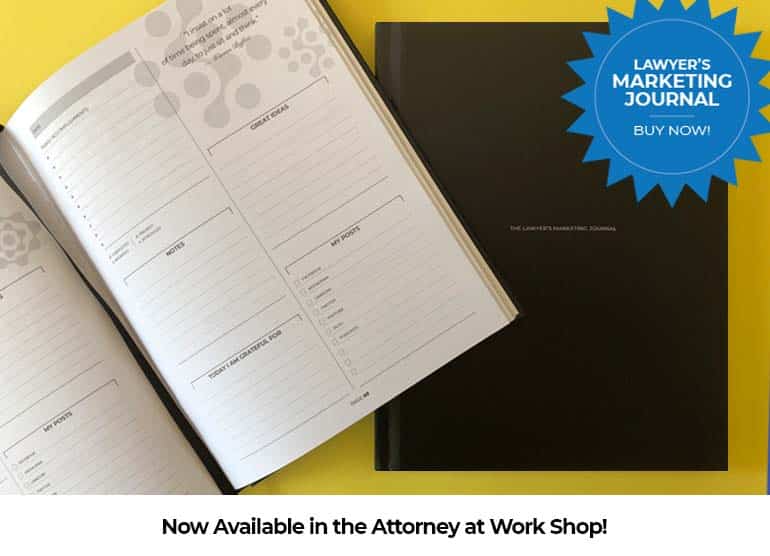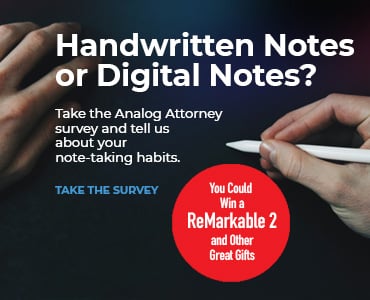Fresh from the Legal Marketing Association’s Midwest Conference, helpful hacks and hot topics for DIY legal marketers.

Table of contents
When you work at a small or midsize firm, how do you get things done with limited resources on a limited budget? The answer is simple: by doing it yourself!
OK, maybe it’s not so simple. That’s why we — Lauren and Laura — wanted to provide tips, tools and best practices for small to midsize legal marketers who have low or no budget or resources. By crowdsourcing hot topics and pain points from fellow legal marketers, we put together an interactive session for the 2023 Legal Marketing Association Midwest Conference this month in Chicago. What follows is a (non-exhaustive) list of information and tools for two of the hottest topics you can take back to your law firm to research, test and use!
First, let’s dive into our definition of DIY marketing.
What Is DIY Marketing?
DIY marketing involves owning your marketing strategy from start to finish when YOU are the resource, and there’s limited or no budget.
A Few Favorite DIY Legal Marketing Hacks
Every successful DIY marketing strategy is powered by a well-crafted marketing technology stack. When time is tight, a clever tech hack can save the day. Here are a few of our favorite hacks to add to your DIY marketing toolbox:
- Use Zapier to automate your work and reclaim your time.
- Use Slack for just about anything — team communication, alert messages, and automation.
- Use Bitly to generate branded short links as a form of omnichannel marketing.
- Use Grammarly to help avoid embarrassing typos and establish a consistent tone of voice in your writing.
- Use ClickUp to manage projects, tasks and even documents.
- And, of course, Canva is a big win for the DIY marketer. You can create your own images and graphics without a design degree.
Trending Hot Topics Among Marketers in Small and Midsize Firms
Before the session, we surveyed LMA members to find out what trending topics they wanted to learn to DIY. Artificial intelligence and generative AI came in at a whopping 90%, followed closely by search engine optimization (SEO) and search engine marketing (SEM).

Ease of use and sustainability are critical for small and solo teams in law firms when it comes to DIY marketing. So, we discussed these hot topics through the lenses of workflow, technology and sustainability.
Artificial Intelligence and Generative AI
AI Workflow Hacks for DIY Legal Marketers
- Use generative AI tools to help make your copy more concise and eliminate legalese.
- Use ChatGPT to brainstorm content ideas or the best hashtags for a social post.
- Use AI like a thesaurus (“I need words that replace [this word]”).
- Double-check your work using AI.
- Feed it your content and ask it for feedback. (For example: Am I hitting the intended audience? Where should I break up the content? Is the content in active voice?)
- Use it to automate simple things like converting a list into a bulleted list or stripping out extra characters in a passage.
- Use browser extensions that integrate with AI so you can easily summarize on-page content or Google search results.
Fave Tech Tools
- AI legal assistants like Casetext’s Co-Counsel can be used to research and identify new practice areas and niches where you can grow your firm’s business.
- Google’s Bard can write meta descriptions for SEO and write code.
- AI editors like Grammarly or the Hemingway App can help you repurpose content for practice area pages.
- Notion.so and ClickUp have inherent AI tools that can summarize or generate content based on information within a record.
- Canva just released its “Magic Studio” with features that help you design and write using AI — and it integrates with imaging tools like DALL-E and Imagen.
Making It Sustainable
It is critically important to fact-check work that is generated by AI tools.
- Beware of AI hallucinations. Large language models (LLMs) are only as good as the data they are trained on. Case in point: Two New York lawyers were sanctioned after submitting a legal brief with falsified case citations generated by ChatGPT.
- Some firms have seen their clients using tools like ChatGPT to double-check their work.
- View AI as a tool to integrate with your work, not as a replacement for your work.
- There are tools out there that detect content that has been generated using an AI tool, so again, use it as a supplement.
Developments in generative AI are coming fast, so stay on top of trends. You can do your own research or follow AI experts like our LMA friend, Jessica Aries of By Aries, who explore and explain the latest best practices.
Search Engine Optimization and Search Engine Marketing
We were a little surprised that SEO and SEM showed up at the top of the survey. This type of marketing can be costly, it requires an expert, and it’s got to be for a niche topic. Generally, plaintiff firms have a better handle on this strategy because their audience (consumers) uses search to find lawyers, whereas corporate firms get business from referrals and word-of-mouth.
SEO/SEM Workflow Hacks for DIY Legal Marketers
SEO is a long-term strategy designed to help your firm rank higher in organic search, whereas SEM is a short-term investment.
Not all firms need to play the “game” that is SEO/SEM. Following general best practices (such as using styles and complying with ADA rules like filling out alt and image tags) can help your SEO without having to use budget dollars.
- Understand your target audience so you can identify what keywords people are using to search for your services.
- Use styles in your website editor, putting the keywords in the URL, the page or post title, and in the headers and subheads.
- Identify KPIs to measure success (such as keyword rankings, share of voice, cost-per-click, conversion rate).
Fave Tech Tools
Free SEO tools that are native to Google:
- People Also Ask and Related Searches
- Google Trends
- Keyword Research Planner on Google Ads
- Google Analytics 4 can tell you what search terms people used to get to your site and what they searched for on your site.
- Search Console to make sure your site has basic compliance.
Low- to no-cost SEO tools:
- Neil Patel’s UberSuggest and Answer the Public
- Keyword Surfer
- Screaming Frog
- Ahrefs Webmaster Tools[GU8]
- ChatGPT for helping you draft meta descriptions and alt descriptions
- ClickUp’s AI specifically for SEO targeting (below)

Making It Sustainable
Keep up with Google algorithm changes by:
- Following Google’s blog.
- Listening to Google’s Search Off the Record podcast.
- Subscribing to SEO news sites like Search Engine Land and Search Engine Journal.
- Tracking changes in Google Analytics.
While keywords are important, the focus should be on creating high-quality, informative and relevant content, rather than stuffing your content with keywords.
Finally, a Word or Two About Using Zapier
Zapier is an automation tool that integrates with over 5,000 applications (including Slack, HubSpot, WPForms and more). Basically, Zapier feeds information from one tech application to another. For example, if you enter a message into a specified Slack #channel, then Zapier can push that message to the task manager of your choice. Zapier might look complicated, but it’s actually easier to use than you think.
We suggest plotting out your automation first:
when [X] happens (the trigger), then [Y] happens (the action)
From there, you connect your platforms and fill out the Zapier automation form fields. The LMA Midwest audience was interested in how Zapier can integrate with HubSpot, a tool many small and midsize firms use for business development tracking. Here are some examples of how HubSpot and Zapier can work together:
- When a new contact is created in HubSpot, the contact is then added to a MailChimp mailing list.
- When a new contact is created in HubSpot, the contact is then added to a specified Google Ads customer list.
- When a contact is created or updated in HubSpot, you’re alerted by a posted message in a specified Slack #channel.
- When a new lead comes in from Google Ads, a new contact is created in HubSpot.
- When someone fills out a WPForm on your website, a new prospect is created in HubSpot.
Learn More
If these topics are interesting to you, we will be speaking at LMA Michigan in November. Check legalmarketing.org > Midwest Region for details on the program, along with the LMA Local Events calendar for meetings in your area.
Dr. Lauren McNee Doherty is the Marketing Manager at Pritzker Hageman, where she uses her DIY marketing skills to help attorneys obtain justice for injured people. Her team’s strategic marketing campaigns have led to groundbreaking recoveries in niche areas of personal injury law, such as Legionnaires’ disease, burn injuries, food poisoning, and commercial truck accidents. Lauren is a long-time LMA volunteer and will serve as the 2024 Treasurer of the LMA Midwest Regional Board. Outside of work, she enjoys playing the flute and planning weekly “Date Day” with her husband. Follow Lauren on LinkedIn.
Laura (Toledo) Gutierrez has spent the last two decades in midsize law firms DIYing everything from events and print collateral to experience databases and data automation. She’s currently Sales and Project Manager at Content Pilot, a technology and strategy company for law firms, where she puts her writing and tech knowledge to good use. Laura also helps fellow legal marketers and business development professionals create strategic, custom marketing and tech solutions through her business, {EM}Dash. She is a long-time LMA volunteer, mostly recently serving as 2021 President for LMA Midwest Region. Follow Laura on LinkedIn.
Image © iStockPhoto.com.

Don’t miss out on our daily practice management tips. Subscribe to Attorney at Work’s free newsletter here >

Lawyer’s Marketing Journal
Teddy Snyder, author of Women Rainmaker’s Best Marketing Tips, has designed a journal that is ideal for tracking marketing and BD activities, ideas and inspiration. Undated pages give you the flexibility to start today.





















